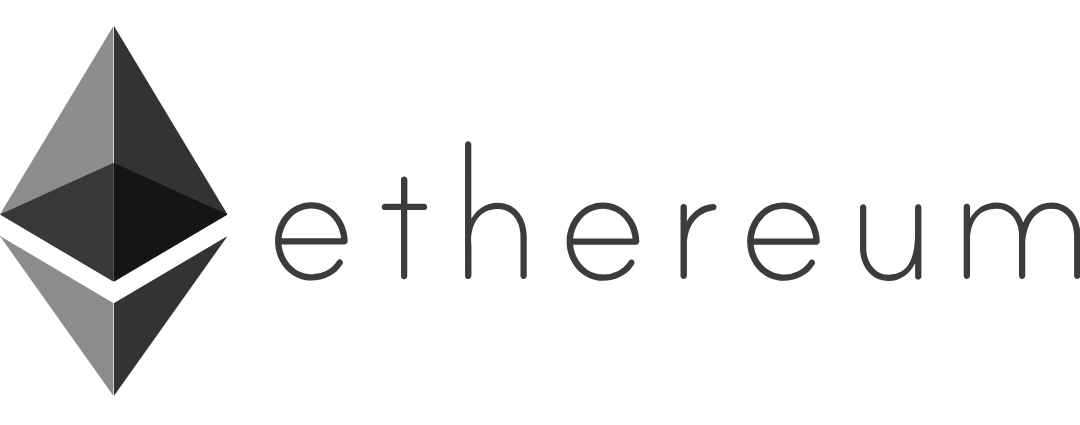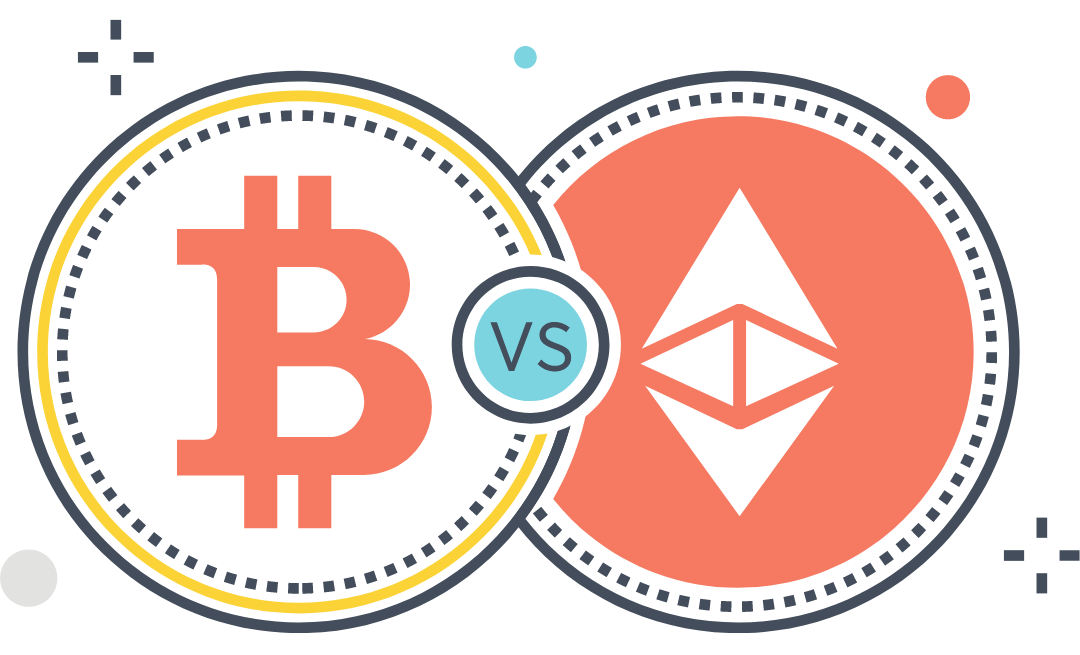Bitcoin (BTC) and Ethereum (ETH) are the two most popular cryptocurrencies. In this article, we are going to look at what exactly differentiates these two.
According to CoinMarketCap, there are more than 9,000 cryptocurrencies in existence as of early 2021. For new traders, it makes diving into the world of digital assets overwhelming and downright confusing. Each coin has its own special properties, but the one thing that they all share is that they run on a blockchain, a digital ledger (or record, if you will) that links blocks of information using cryptography – hence, cryptocurrency.
Bitcoin (BTC) is the world’s first cryptocurrency, being introduced originally as open-source software in 2009 by the mysterious Satoshi Nakamoto. The blockchain, created by Nakamoto specifically for Bitcoin, made it the first digital currency to solve the double-spending problem (where a digital token could be bought more than once or duplicated) without the need for a central authority. In essence, this created an asset that was completely decentralized and free from tampering or third-party influence.
In this section, we will outline some of the key factors that make Bitcoin so important. If you would like to learn more about how to buy Bitcoin, check out our article about it.

Ethereum vs Bitcoin: Mining
By now, you have surely heard of people “mining” Bitcoin or other cryptocurrencies on their personal computers or through large collections of locally connected computers (called “farms”). Essentially, these miners use software to solve the computational problems of the blockchain in order to process transactions on the global network smoothly; miners are the backbone of Bitcoin’s blockchain and keep the blockchain consistent, complete, and unalterable. As a reward for their hard work and the skyrocketing of their electricity bills, they are allotted Bitcoin by the network for their service; in other words, it is what is known as the proof of work (PoW) of the mining process. Keep in mind that mining Bitcoin requires an enormous amount of processing power and – at Bitcoin’s current state – takes a comparably exorbitant amount of time.
Proof of stake was introduced as an alternative to proof of work in order to reduce the high number of resources needed to validate the blockchain’s network. With the ETH 2.0 upgrade, the Ethereum network will transition from a proof of work protocol to a proof of stake protocol.

Bitcoin’s Key Characteristics
• Limited Supply: During Bitcoin’s creation, Nakamoto set a monetary policy to ensure Bitcoin’s scarcity so that it would never exceed a certain amount. That amount is 21 million BTC. Every four years, the time it takes to mine the supply of Bitcoin doubles (an artificial process called Bitcoin halving); it is estimated that all 21 million BTC will be in circulation by 2140. This limited supply ensures Bitcoin’s value as an asset.
• Decentralized: As the pioneer of cryptocurrency, one of its main features is that no central authority controls Bitcoin. There is no server, and the network operates from peer-to-peer. The public ledger, viewable by anybody, is maintained by the network of miners from around the world. Much of the potential value of Bitcoin comes from its decentralized nature and, in theory, it could act as a hedge (or failsafe) against price fluctuations in the real world (such as inflation and deflation).
• Simplicity: Bitcoin and its blockchain serve as a digital currency and its ledger, respectively. The BTC blockchain is used nothing more for taking notes, and BTC itself is simply an alternative, digital form of money, or a store of value. For this reason, Bitcoin sees its value as being something that could both supersede and accompany traditional fiat currency.

What is Ethereum?
On the surface, Bitcoin and Ethereum might just look like the number 1 and 2 of the cryptocurrency world. If we delve into the details, the two are substantially different. Ethereum, proposed originally in 2013 by the prodigious Russian-Canadian programmer Vitalik Buterin, served to build on the blockchain concepts introduced by Satoshi Nakamoto. Rather than utilizing the blockchain strictly for recordkeeping, Ethereum sees itself as a platform, where the concepts of the blockchain could be utilized for other real-world endeavours. When comparing Bitcoin vs Ethereum, this is the main distinction that needs to be made. The accompanying cryptocurrency to the Ethereum network is Ether (ETH). In this section, we will briefly look at just what exactly makes Ethereum. If you want to learn more about Ethereum and how to purchase Ether, you can do so through our article.
Ethereum’s key characteristics
• Smart contracts platform: In the most basic sense, a smart contract is a program or transaction protocol that is “intended to automatically execute, control, or document” the actions related to a contract or agreement, according to Wikipedia. This eliminates the need for a mediator or “middleman.” Ethereum’s blockchain technology can store executable code that can fulfill the role of a mediator and even create additional cryptocurrencies that run on top of its blockchain. While Bitcoin’s blockchain is technically also a smart contract, Ethereum’s smart contracts are more complex in that they can only be executed when certain conditions are met.
- Gas: Gas is the unit that the Ethereum network uses when calculating a transaction fee, roughly equivalent to the number of resources it takes to executes a smart contract. We go into a little more detail on how gas works in our Ethereum article linked above, but essentially, gas is a fee that repays miners on the Ethereum network for their services.
• Applications: Because of the Ethereum blockchain’s ability to store executable code, Ethereum is able to run applications and programs. Where Bitcoin sees itself purely as a digital currency, the Ethereum blockchain is modular, being able to apply its technology to a variety of uses by developers. Ethereum contracts are able to run anything that a computer program is able to, a concept which is known as being “Turing-complete.” Building on Bitcoin’s concept of decentralization, the Ethereum platform allows for things like decentralized applications (dApps) and decentralized finance (DeFi). Popular applications of the Ethereum platform include video games (like Cryptokitties) or creating non-fungible tokens (NFTs).
• Limitless supply: As of 2021, there is currently no hard cap on the amount of ETH that can be circulated. When comparing Bitcoin and Ethereum, this is an important distinction to make if we are mainly focusing on their uses as a digital currency.

Ethereum vs Bitcoin: In summary…
• Both Ethereum and Bitcoin utilize blockchain technology. Because of the blockchain’s properties, both are decentralized, free from the tampering of a central bank or authority.
• However, where Bitcoin is mainly utilized as a payment network and store of value, Ethereum is a smart contracts platform that can be utilized for a variety of other applications, including acting as a digital token with ETH.
• Where Bitcoin’s blockchain is used exclusively to store transaction history as a ledger, Ethereum can execute programs and codes in the same way a computer can.
• While Bitcoin and Ethereum can both be distributed as a digital currency (as Bitcoin and Ether), only Bitcoin has a hard limit on the amount of BTC that can ever exist.
Why might someone choose Bitcoin or Ethereum?
It really all depends on what your needs are since BTC and ETH fulfill different needs. Hopefully, this article has been helpful in determining the key differences between Bitcoin and Ethereum. Both are very valuable, but each cryptocurrency sees this value in its own way!

Disclaimer: No Investment Advice The contents of this article are for informational purposes only and are not intended as, and shall not be understood or construed as, investment advice, financial advice or trading advice. There are substantial risks associated with the trading of cryptocurrencies and you should consult with a licensed financial advisor prior to making any trading or investment decisions. Content Not Warranted The contents of this article are provided “as is” and without warranties of any kind. You bear all risks associated with the use of the content provided including without limitation, any reliance on the accuracy, completeness or usefulness of any content available within this article.
Follow us on social!


